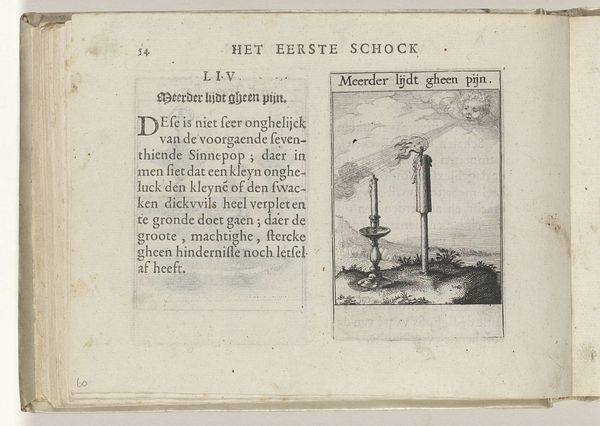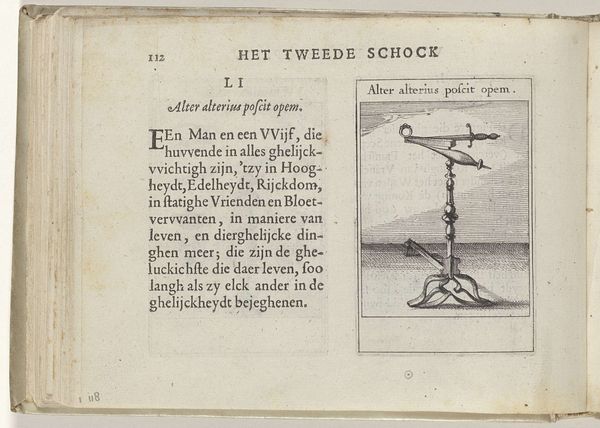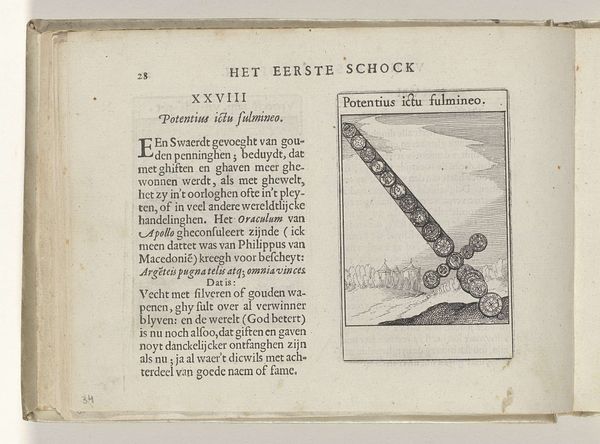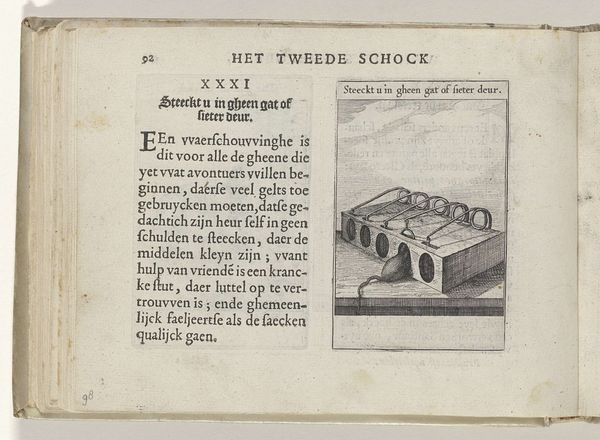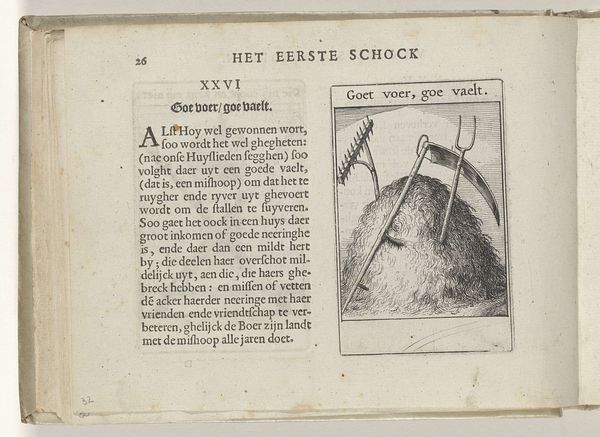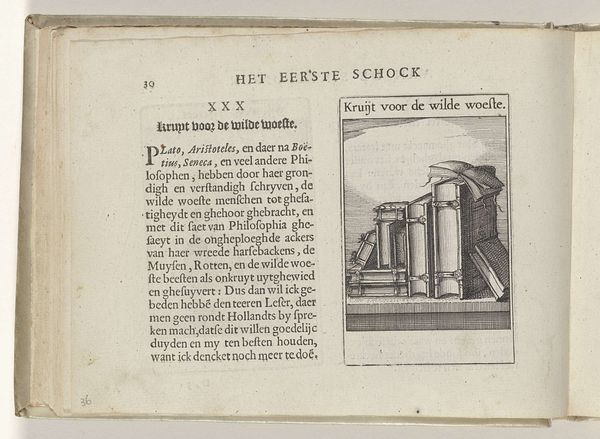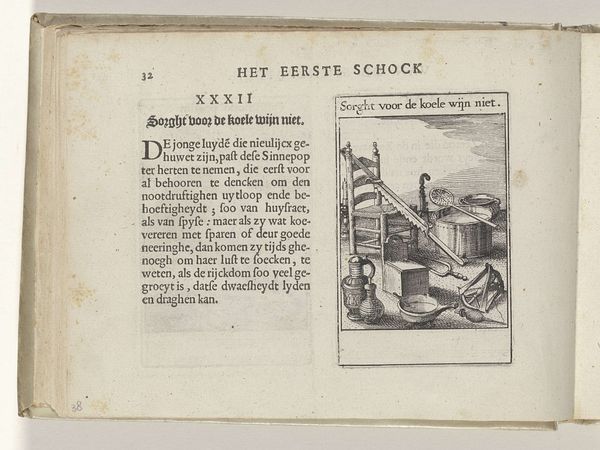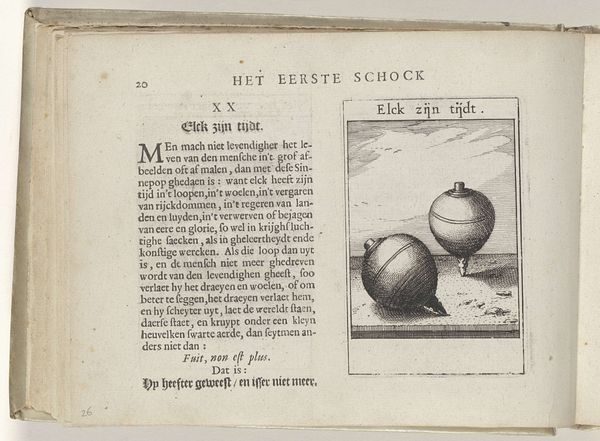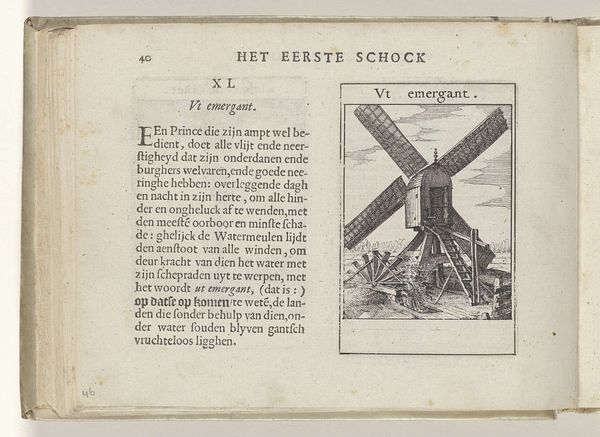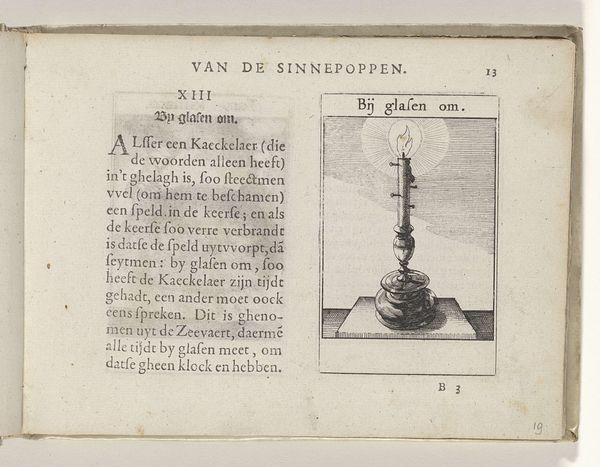
drawing, print, paper, ink, engraving
#
drawing
#
baroque
#
dutch-golden-age
#
ink paper printed
# print
#
paper
#
ink
#
engraving
Dimensions: height 137 mm, width 188 mm, height 95 mm, width 60 mm
Copyright: Rijks Museum: Open Domain
"XXXVIII Teering na neeringh" was made by Roemer Visscher in the early 17th century. It’s an engraving in a book of emblems, images paired with sayings to impart a moral or message. Here, we see a bird pecking at a tuft of feathers attached to a stand. "Teering na neeringh" translates to “tapering after trading,” suggesting a decline in fortune or resources. Visscher created this emblem during the Dutch Golden Age, when the Netherlands experienced immense economic growth and social change. Yet, this growth wasn't equally distributed, leading to disparities in wealth. This emblem speaks to the anxieties of a society grappling with new forms of commerce and wealth accumulation. The image and text suggests that one can maintain their life by spinning, even if poorly; which implies that one can survive by trading, but slowly decline. It presents a counter-narrative to the dominant ideology of endless prosperity by reminding viewers of the precariousness of wealth and the importance of moderation and humility. Ultimately, the image invites us to reflect on the relationship between material wealth, ethical behavior, and social responsibility.
Comments
No comments
Be the first to comment and join the conversation on the ultimate creative platform.
